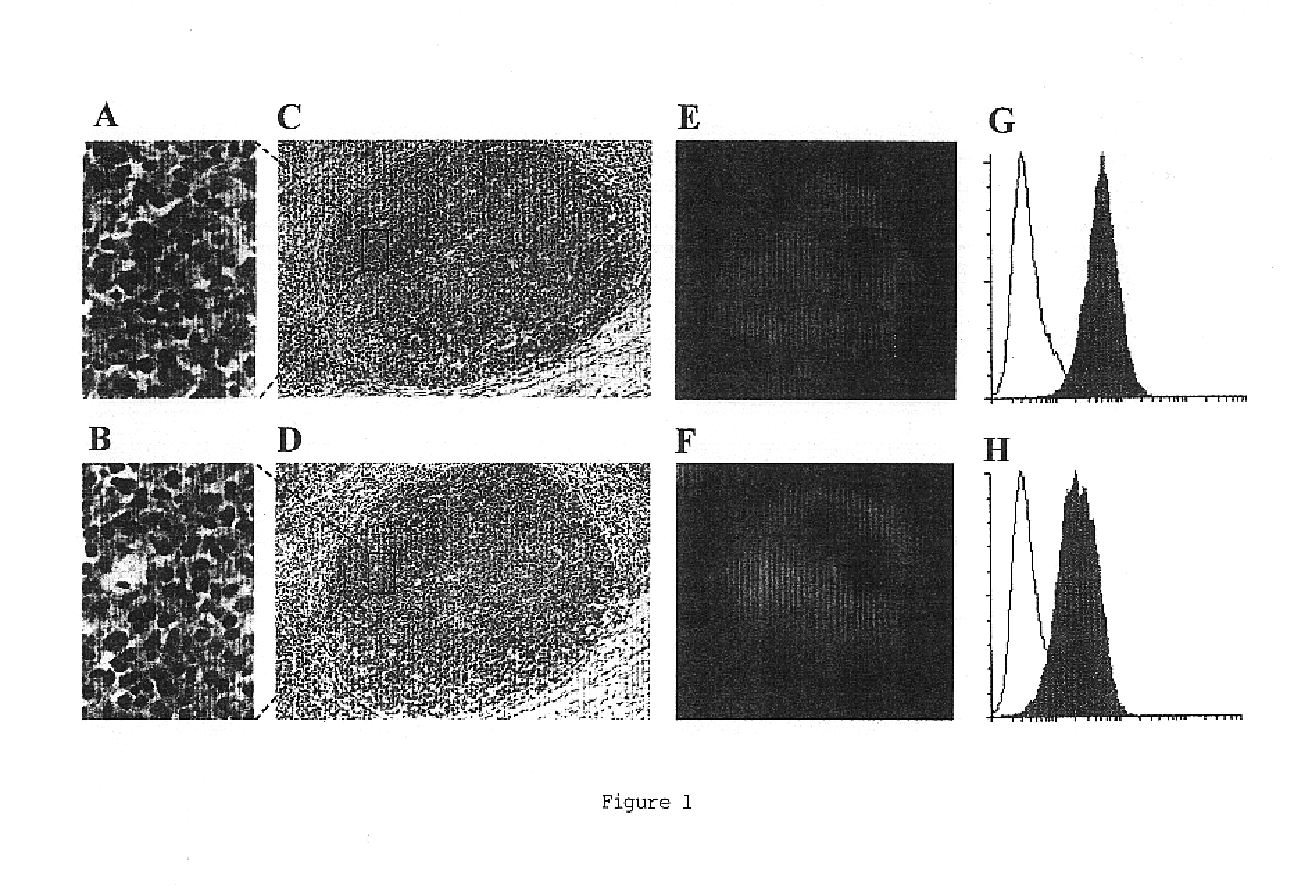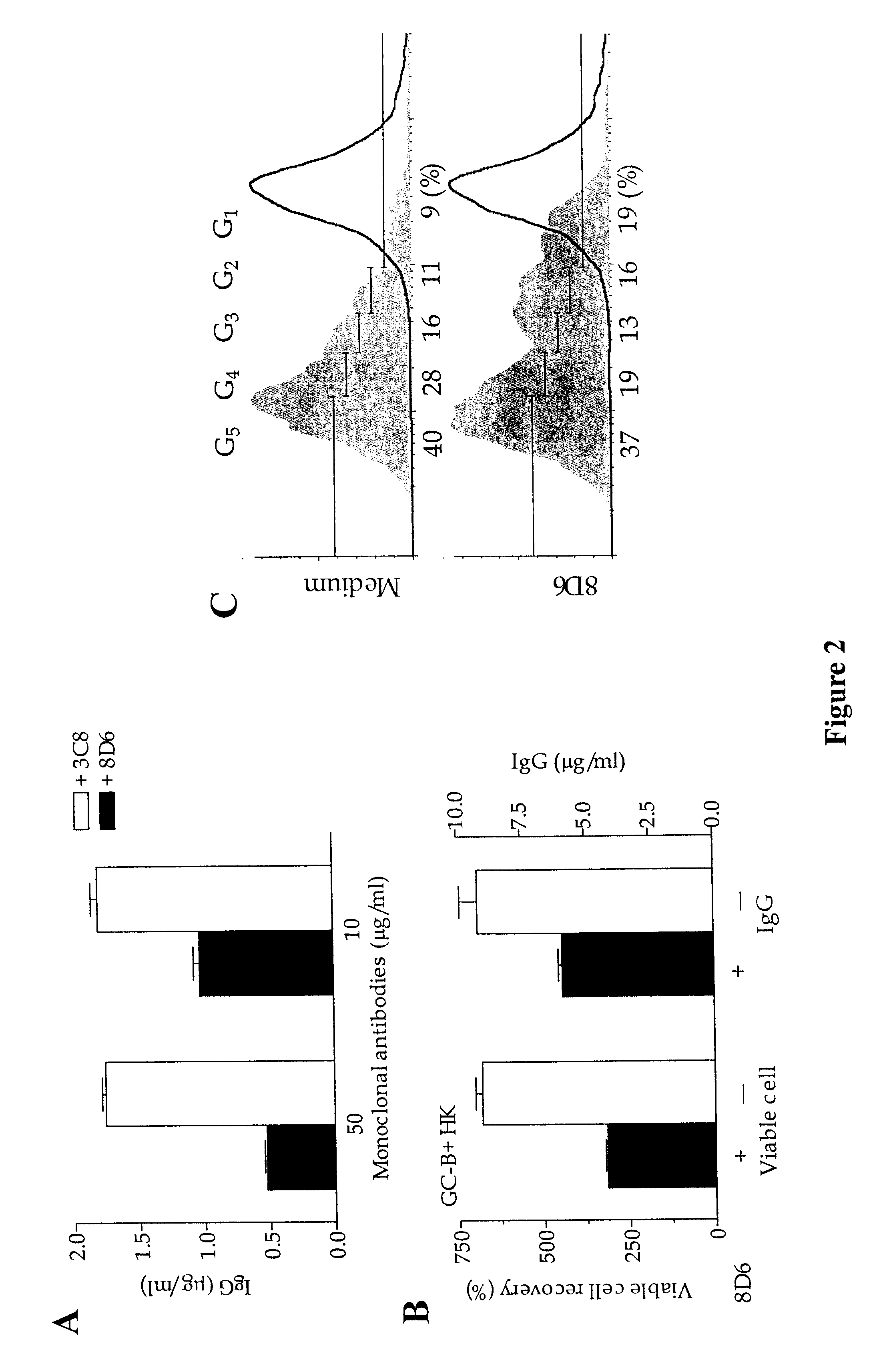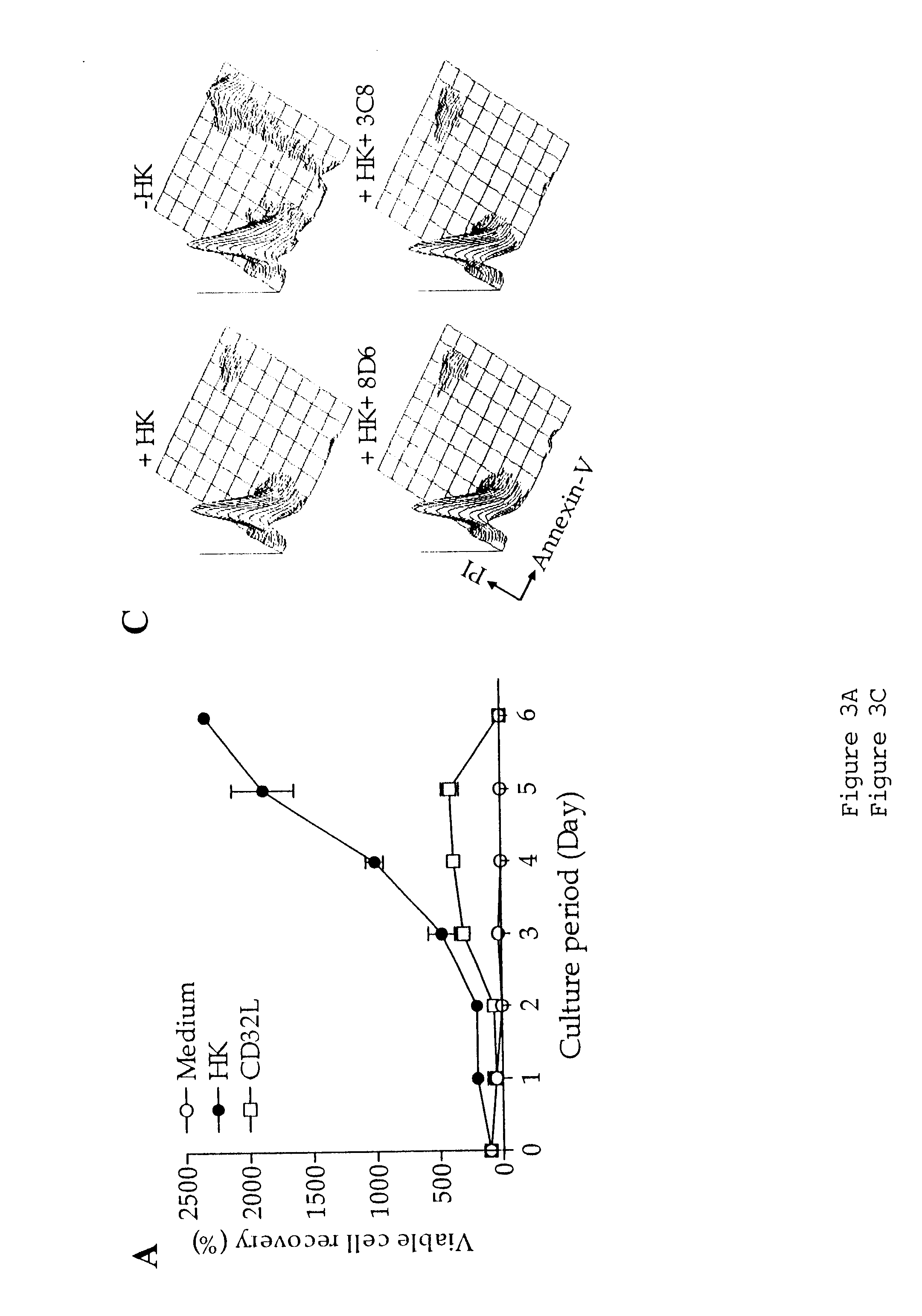Monoclonal antibodies that suppress B cell growth and/or differentiation
a technology of monoclonal antibodies and b cells, applied in the direction of antibodies, fused cells, peptide/protein ingredients, etc., can solve problems such as becoming fatal diseases
- Summary
- Abstract
- Description
- Claims
- Application Information
AI Technical Summary
Benefits of technology
Problems solved by technology
Method used
Image
Examples
example 2
Generation of mAbs Staining FDCs
Murine mAbs that react to human tonsillar FDCs were generated using a procedure that involved tolerization before immunization (Golumbeski et al., Anal. Biochem. 154:373-381, 1986). Tolerization was achieved by injection of newborn (within 40 h after birth) BALB / c mice with tonsillar mononuclear cells (MNCs) containing human T and B cells. At 2 month of age, this animal was injected intraperitoneally with freshly isolated FDC clusters (2.times.10.sup.4) three times in a 2-week interval. After the third immunization, the serum from the immunized mouse showed strong reactivity to tonsillar FDCs in frozen tissue sections, but no reactivity to MNCs as assayed by the cell-based ELISA. Spleen cells from this mouse were used as fusion partners with a mouse myeloma cell line, SP 2 / 0, to generate mAbs. After the cell fusion, more than 600 hybridomas were grown, and their supernatants were screened for FDC staining as follows. The adjacent cryostat sections of ...
example 3
Functional Blocking Activity of FDC-Specific mAb 8D6 in FDC-B Cell Interaction
To measure its ability to block FDC-B cell interaction, mAb 8D6 was used in the coculture of B cells and FDC clusters. Because Ag-activated T cells participate in GC reactions by direct cell-to-cell contact and by secreting cytokines (Han, S., et al., J. Immunol. 155:556-567, 1995), the defined signals of activated T cells, such as anti-CD40, IL-2 and IL-10, were used to characterize mAb 8D6 functions.
Tonsillar B cells were cocultured with irradiated FDC clusters (2,000 clusters per well; 5,000 rads) for 10 days in the presence of mAb 8D6 or 3C8, anti-CD40 (100 ng / ml), rhIL-2 (10 U / ml), and rhIL-10 (30 ng / ml). IgG levels in conditioned media were measured by human IgG-specific ELISA. IgG concentrations in the control cultures with B cells and B cells plus FDCs were 0.26 and 1.8 mg / ml, respectively. As can be seen from FIG. 2A; mAb 8D6 consistently inhibited the FDC-mediated B cell IgG secretion. The blocki...
example 4
The Growth Inhibition of Lymphoma Cell Line, L3055, by mAb 8D6 and mAb 4G10.
GC-B cells undergo complex interactions with FDCs and T cells in the course of differentiation into memory B and plasma cells. GC-B cells freshly isolated from tonsils are heterogeneous with respect to the stage of differentiation, mutation frequency, and Ig class (Pascual, V., et al., J. Exp. Med. 180:329-339, 1994). To delineate the individual roles of FDCs and T cells in GC-B cell differentiation at the clonal level, a unique experimental model was developed which employed the FDC line, HK, and a Burkitt's lymphoma cell line, L3055. L3055 cell line resembles normal centroblasts and represents a clonal population originating from the GC (Choe et al., J. Immunol. 164:5643, 2000).
Like freshly isolated centroblasts, L3055 cells underwent spontaneous apoptosis when cultured in the absence of fresh FDCs or HK cells. However, when L3055 cells (2.times.10.sup.4 cells / well) were cultured in the presence of irradia...
PUM
| Property | Measurement | Unit |
|---|---|---|
| concentrations | aaaaa | aaaaa |
| concentrations | aaaaa | aaaaa |
| concentration | aaaaa | aaaaa |
Abstract
Description
Claims
Application Information
 Login to View More
Login to View More - R&D
- Intellectual Property
- Life Sciences
- Materials
- Tech Scout
- Unparalleled Data Quality
- Higher Quality Content
- 60% Fewer Hallucinations
Browse by: Latest US Patents, China's latest patents, Technical Efficacy Thesaurus, Application Domain, Technology Topic, Popular Technical Reports.
© 2025 PatSnap. All rights reserved.Legal|Privacy policy|Modern Slavery Act Transparency Statement|Sitemap|About US| Contact US: help@patsnap.com



